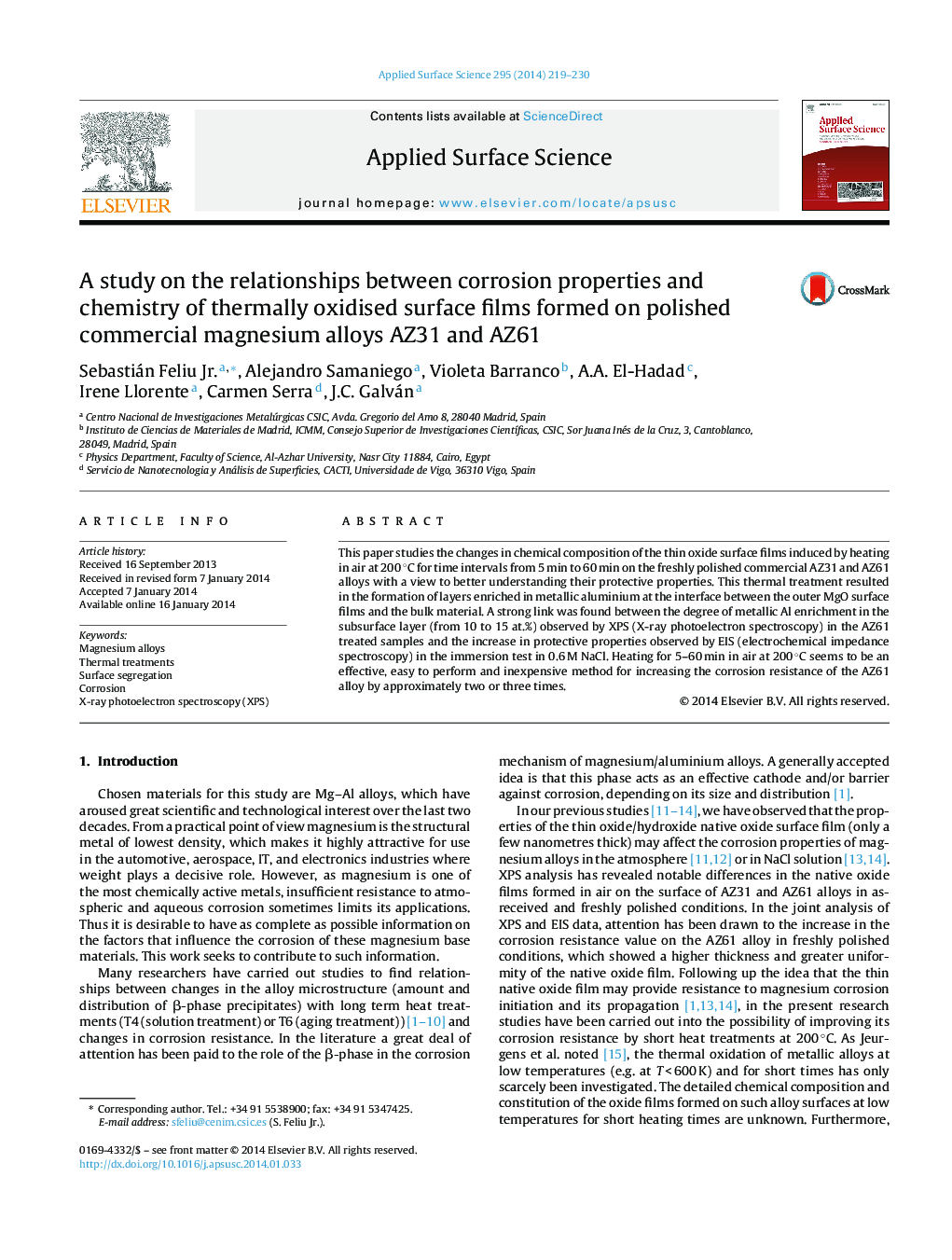| Article ID | Journal | Published Year | Pages | File Type |
|---|---|---|---|---|
| 5358755 | Applied Surface Science | 2014 | 12 Pages |
Abstract
This paper studies the changes in chemical composition of the thin oxide surface films induced by heating in air at 200 °C for time intervals from 5 min to 60 min on the freshly polished commercial AZ31 and AZ61 alloys with a view to better understanding their protective properties. This thermal treatment resulted in the formation of layers enriched in metallic aluminium at the interface between the outer MgO surface films and the bulk material. A strong link was found between the degree of metallic Al enrichment in the subsurface layer (from 10 to 15 at.%) observed by XPS (X-ray photoelectron spectroscopy) in the AZ61 treated samples and the increase in protective properties observed by EIS (electrochemical impedance spectroscopy) in the immersion test in 0.6 M NaCl. Heating for 5-60 min in air at 200 °C seems to be an effective, easy to perform and inexpensive method for increasing the corrosion resistance of the AZ61 alloy by approximately two or three times.
Keywords
Related Topics
Physical Sciences and Engineering
Chemistry
Physical and Theoretical Chemistry
Authors
Sebastián Jr., Alejandro Samaniego, Violeta Barranco, A.A. El-Hadad, Irene Llorente, Carmen Serra, J.C. Galván,
